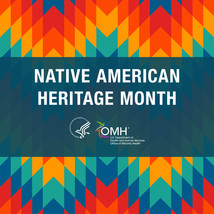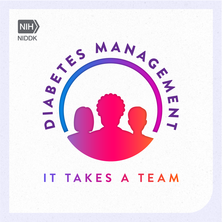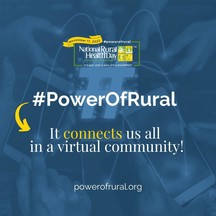 Native American Heritage Month celebrates the rich and diverse cultures, traditions, and history and acknowledges the important contributions of American Indians and Alaska Natives in the United States, including their work in public health. Throughout November, the HHS Office of Minority Health (OMH) will focus on raising awareness about health disparities impacting the American Indian/Alaska Native (AI/AN) community and highlighting policies, programs, and practices aimed at advancing health equity for AI/AN populations. Visit the OMH Native American Heritage Month website to find information about health disparities, downloadable materials, blogs, and health resources. |  Experts are predicting another wave of COVID infections as the weather turns colder and people spend more time indoors. Protect your friends, loved ones, and community members by encouraging them to get an updated COVID vaccine during the Vaccination Weeks of Action, which runs until November 30. According to the Centers for Disease Control and Prevention (CDC), if you are 50 or older, your risk of dying from COVID is 25x higher than adults under 30. Your risk is even higher if you have a chronic disease like diabetes, heart disease, or lung disease. Updated vaccines protect against the original COVID virus and the current Omicron strains. No matter which COVID vaccine series you got or how many additional doses you've already gotten, get an updated COVID vaccine if it's been at least two months since your last dose. |  The flu vaccine is the best way to protect yourself, your family, and your friends from potentially serious complications from the flu. Most people who get sick with the flu will have a mild illness—but the flu can worsen chronic health problems. According to a study published by the CDC in 2021, across the 2009-2019 flu seasons, Black people had the highest flu-associated hospitalization rates, followed by American Indian/Alaska Native and Hispanic/Latino people, with similar trends for intensive care unit (ICU) admission rates. The study also found that disparities were greatest among racial and ethnic minority infants and children up to four years old. However, 2022 data showed that flu vaccination reduced children's risk of severe life-threatening influenza by 75 percent. Help fight the flu! Schedule an appointment for a flu vaccine today and practice healthy habits like covering your cough and washing your hands often. Spread the word by visiting CDC's Fight Flu – Don't Let it Stop You webpage and downloading their toolkit. |  November is National Diabetes Month, and this year's theme is Diabetes Management: It Takes a Team, focusing on helping you manage your diabetes by building your health care team. Diabetes is a disease that occurs when your blood glucose, also called blood sugar, is too high. It affects about 37 million Americans, including adults and youth. Diabetes can damage the eyes, kidneys, nerves, and heart, and is linked to some types of cancer. According to the American Diabetes Association, 14.5 percent of American Indian/Alaskan Native people, 12.1 percent of Black people, 11.8 percent of Hispanic/Latino people, and 9.5 percent of Asian people have been diagnosed with diabetes, in comparison to 7.4 percent of white people. Visit the National Institute of Diabetes and Digestive and Kidney Diseases (NIDDK)'s National Diabetes Month website to download their toolkit and to find tips on how to help manage your diabetes and build your health care team. |  National Rural Health Day (NRHD) celebrates the efforts of rural health care providers, organizations, local health departments, and other stakeholders dedicated to addressing social determinants of health and the challenges that rural communities face today and into the future. According to the Health Resources and Services Administration (HRSA), rural communities have a disproportionate shortage of qualified health care providers. Research published by the Rural and Minority Health Research Center shows that rural racial and ethnic minorities have higher rates of poverty and obesity than rural white people. NRHD is an opportunity to explore ways health professionals, organizations, state and local government, and others can address these disparities and work toward achieving health equity. Visit the National Organization of State Offices of Rural Health's Power of Rural website to find NRHD graphics, content for social media, planning guides, a bilingual coloring book, and more. The site also features resources for non-profit organizations, healthcare providers, and public health professionals. |  In observance of Native American Heritage Month, the OMH Knowledge Center is featuring a collection of recent reports and articles on health disparities in American Indian and Alaska Native populations. Many of these resources are available for free. To view this collection in the online catalog, click here. | |

No comments:
Post a Comment